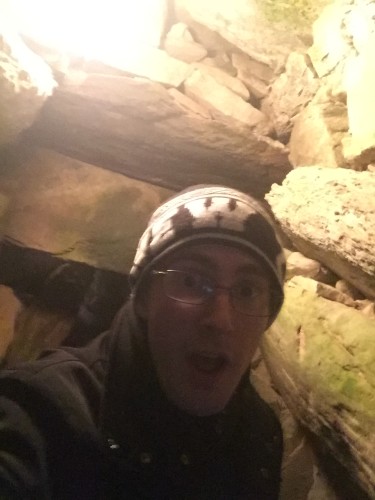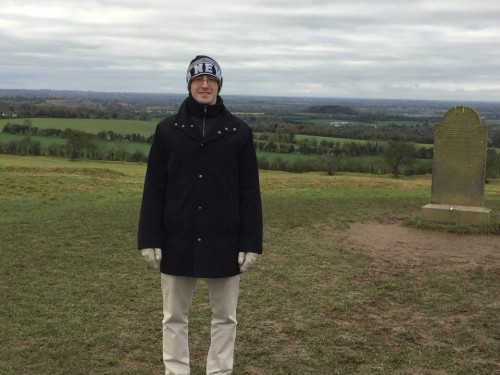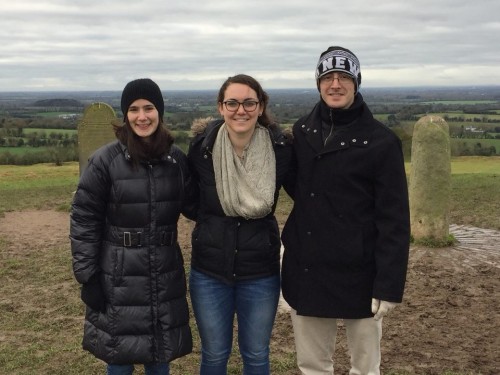On Monday Emma, Megan, and I travelled to the ancient ruins of Newgrange and the Hill of Tara in County Meath, about a 45 minute drive north of Dublin. Newgrange is a massive circular mound on a hill, constructed of stone, with a grassy top, with a narrow passageway leading to an interior chamber that floods with light during the winter solstice each year. Its construction dates to 3200 BC, making it older than the pyramids and Stonehenge. An astronomical observatory, tomb, and religious shrine all in one, Newgrange is a reminder to me of the ways that ancient forms of religion were intimately tied to the rhythms of the earth, the patterns of the stars, and the turning of the seasons. The very survival of the ancients would not have been possible without intimate knowledge of the natural systems that made agricultural and pastoral life possible. In this sense, religion was not just a set of rituals and moral expectations that bound the community together, but also a cultural mechanism for intergenerational transfer of practical knowledge of nature.
As a result of the many technological, economic, cultural, and intellectual revolutions that have transpired since the construction of Newgrange, societies have emerged in which most people have very little day-to-day engagement with the natural world. For example, in today’s United States, just 1.3% of the population engage professionally in farming, fishing, forestry, or hunting. Of course, this division of labor has obvious economic advantages. The fewer people in our society that we have working as farmers, the greater the number of people who can be engaged in other kinds of productive activity. But I don’t think this change comes without costs. As many of us disconnect from the natural world, unintentionally or not, we lose a visceral awareness of our continued dependence on natural systems for survival, and this makes it much easier for us to treat our planet with disrespect in ways that are fundamentally dangerous and short-sighted.
As we entered the interior chamber of Newgrange, constructed to flood with light to mark the winter solstice every year, I reflected on how remarkable it is that the structure’s ancient builders had managed to devise such a precise system for predicting cosmological events and marking the passage of the seasons, despite not having the benefits of modern scientific concepts and tools. To the neolithic man, devising such a system must have seemed close to impossible, at least at first. And yet it was done, and done remarkably well. Today, humanity’s relationship with the natural world is much changed. Many of nature’s mysteries have been revealed in intricate detail through rigorous scientific inquiry, and the advent of industrialized society has greatly accelerated the pace at which we as a species are shaping the environment. We now have more powerful tools than ever to multiply nature’s bounty, or to destroy it. If we are to build a truly sustainable global community, I believe that we who live in consumption-oriented industrialized societies will need to find ways to reestablish our connections to the natural world.





